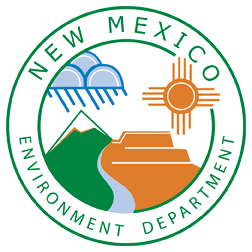EPA Interim PFAS Disposal Guidance
USEPA Interim Guidance on Destroying and Disposing of Certain PFAS and PFAS-Containing Materials That Are Not Consumer Products. The 2024 updated interim guidance presents currently available information on the destruction and disposal of per- and polyfluoroalkyl substances and PFAS-containing materials.
This update identifies available, effective and methods to remediate, dispose of and destroy PFAS contamination. It provides information on the current state of science and associated uncertainties for three large-scale capacity technologies that can destroy PFAS or control PFAS release into the environment: thermal destruction, landfills, and underground injection. This guidance will help decision-makers select technologies based on characteristics of the waste and options available to prevent releases and keep PFAS out of the environment.
New Generator Rule
The Environmental Improvement Board (EIB), the promulgating authority for hazardous waste regulations, adopted the recent federal generator rules which have been incorporated by reference into the New Mexico Hazardous Waste Management Regulations, 20.4.1 NMAC. The Hazardous Waste Bureau is providing a New Rule Crosswalk to indicate the previous regulatory requirements and the newly adopted regulations.
With the adoption of the Generator Improvement Rule, NMED will be reviewing Quick Reference Guides, a new requirement for Large Quantity Generators (LQGs). The Quick Reference Guide is a new part of an LQG’s contingency plan designed to provide easy access for emergency responders to the most critical information for an immediate response to an event. New LQGs submitting contingency plans to local authorities must also include a Quick Reference Guide. Existing LQGs must include a Quick Reference Guide when they update and submit their revised contingency plan to local authorities.
Episodic Generators
The new generator rule allows for Very Small Quantity Generators (VSQGs) and Small Quantity Generators (SQGs) to have one episodic event a year (a facility can petition for a second event) without being categorized into the next generator size. According to the new rule, a facility needs to notify 30 days prior to a planned event and 72 hours after an unplanned event. The facility is required to notify NMED by completing an 8700-12 Notification form; however, a facility also has the option of notifying electronically through MyRCRAid. Please see the links below for the 8700-12 Notification form and MyRCAid instructions.
e-Manifest
The U.S. EPA has developed the e-Manifest which launched nationwide on June 30, 2018. The e-Manifest provides access to higher quality and more timely shipment data while saving time and resources for states, tribes, and industry. For further information on e-Manifest click here.
2017 NMED Satellite Accumulation Area Policy
NMED’s Hazardous Waste Bureau (HWB) has issued final the Satellite Accumulation Area (SAA) Policy for generators of hazardous waste and can be found by clicking on this link. This policy replaces any existing policies, letters, memoranda of understanding, or agreements with any New Mexico facilities. The document is intended to provide guidance and assistance to hazardous waste generators in complying with the SAA requirements under 40 C.F.R. § 262.34(c), and to ensure all generators are operating similarly and regulated consistently. The intention of this policy is to clarify HWB’s position and expectations regarding compliance with 40 C.F.R. 262.34(c). The HWB recognizes due to the great variability of plant design and process layout, every scenario cannot be addressed in the SAA Policy; therefore, we ask that specific facility questions be directed to the HWB Compliance & Technical Assistance Program.
2017 NMED Satellite Accumulation Area Policy
Risk Guidance
2022 NMED Risk Assessment Guidance for Site Investigations and Remediation (2022)
The 2022 NMED Risk Assessment Guidance for Site Investigations and Remediation updates the 2021 Risk Assessment Guidance. Tables A-1 and A-4 have also been updated.
(NEW) Volume I – Soil Screening Guidance for Human Health Risk Assessment (November 2022)
Volume I – Soil Screening Guidance for Human Health Risk Assessment (June 2022)
Volume II – Soil Screening Guidance for Ecological Risk Assessments (March 2017 Revised)
The Excel spreadsheet for NMSSLs Table A-1 (June 2022)
The Excel spreadsheet for Table A-4 Vapor Intrusion Screening Levels (VISL; June 2022)
2021 NMED Risk Assessment Guidance for Site Investigations and Remediation (November 2021)
The Ecological Risk Guidance has been incorporated into Volume II of the Risk Assessment Guidance. For clarification, no revisions have been made to Volume II – Soil Screening Guidance for Ecological Risk Assessments (March 2017).
Volume I – Soil Screening Guidance for Human Health Risk Assessment (November 2021)
Volume II – Soil Screening Guidance for Ecological Risk Assessments (March 2017 Revised)
The Excel spreadsheet for NMSSLs Table A-1 (November 2021)
The Excel spreadsheet for Table A-4 Vapor Intrusion Screening Levels (VISL; November 2021 Revised)
U.S. EPA Regional Screening Levels (RSLs)
U.S. EPA has established Regional Screening Levels (RSLs) that supersede the former EPA Region 3 (RBC Table), Region 6 (HHMSSL Table), and 9 (PRG Table). In the event that New Mexico does not have a screening value listed in the risk tables, facilities may use these RSLs.
General Reporting Guidelines for Corrective Action Documents (8-2020)

